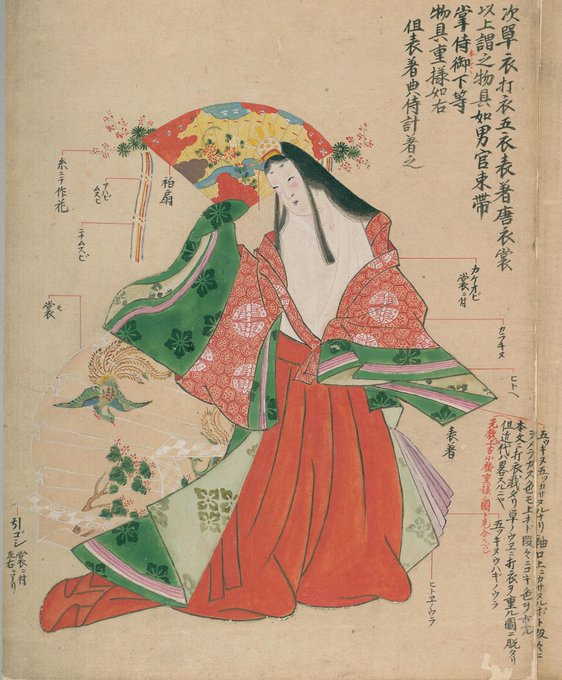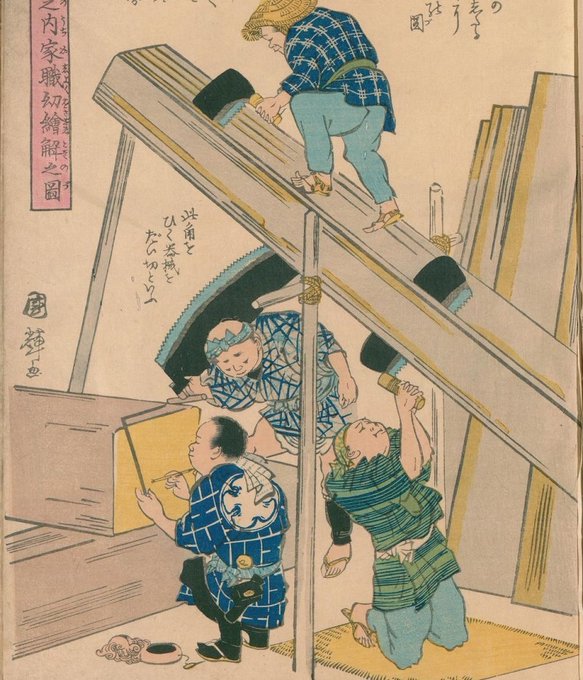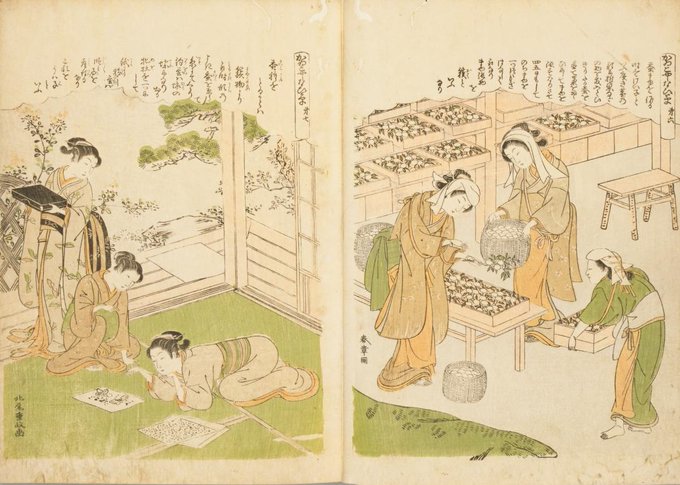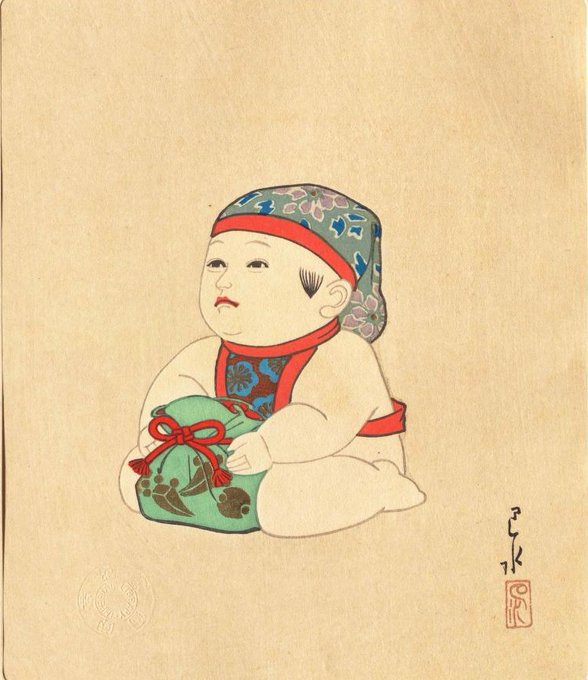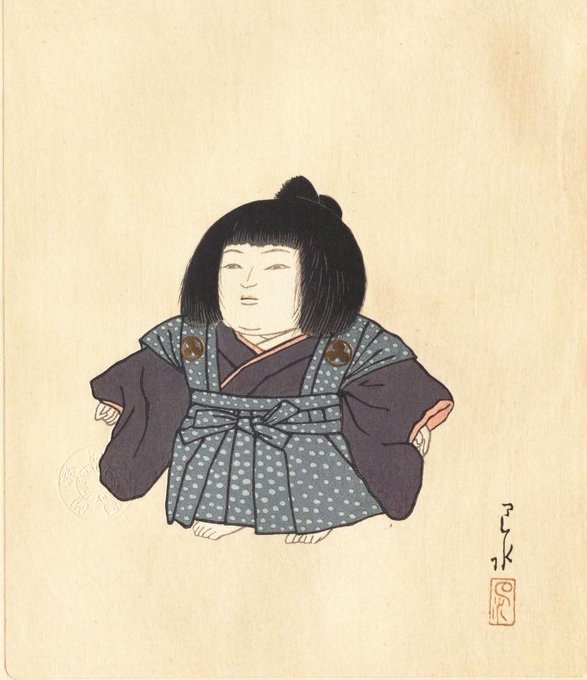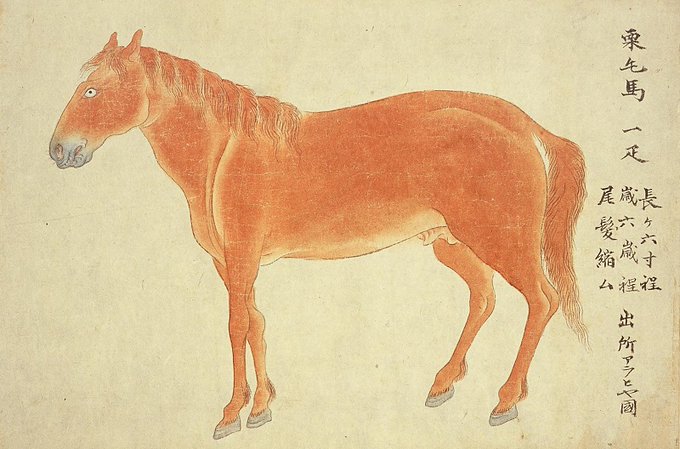ndldigitalのTwitterイラスト検索結果。 294 件中 3ページ目
Hie Shrine in Tokyo was revered throughout the 300 years of the Edo period, and the festival held there in June is one of the three major festivals in Japan, with a lively procession of portable shrines and floats. #ndldigital https://t.co/wrmts0eOjI
#Aquarium at #ndldigital, with a picture scroll by KURIMOTO Tanshu. He was a physician of the mid to late Edo period as well as a naturalist, who left many accurate and beautiful sketches of plants and animals. https://t.co/lEb2FG949A
Early summer is the season to pick fresh tea leaves in Japan!
Here is a #nishikie depicting #TeaPicking in #Uji, #Kyoto. Learn more about famous products around Japan in Meiji era at https://t.co/ba5amvhDG8 #ndldigital
What did people in the Imperial court wear in old times? Take a look at their beautiful outfits at #ndldigital. https://t.co/csKpzT6f2A
This is from a #nishikie series about #HouseBuilding, published by the Ministry of Education for early childhood education. Enjoy seeing how houses were built using traditional Japanese methods! #ndldigital https://t.co/ZbjBBJCHxL
On May 5, "Tango no Sekku", there is a custom of taking a sweet-flag bath. People take a bath by boiling sweet-flag roots and leaves, medicinal herbs thought to ward off evil spirits, and prayed for good health. #ndldigital https://t.co/17cgg3Te7X
These images are of Yosa Buson's transcription of Matsuo Bashō’s Oku no Hosomichi. Matsuo started writing a travel diary in 1689 and finished in 1694. Buson transcribed Matsuo’s text and added his own illustrations. Replica, in 2 vols. #ndldigital https://t.co/wF9jckI4BV
Picture book on the history of the Meiji period. From the restoration of imperial rule (Taisei Hokan) at Edo Castle to the construction of Meiji Shrine. Published in 1923. #ndldigital https://t.co/s5F2FQDlgI
Ito Jakuchu (1716-1800) pursued realistic, true-to-life sketching. In his #kachoga (#FlowerandBird paintings) he often drew chickens. #ndldigital https://t.co/qxawhGNeJY
There were many #sugoroku (Japanese board games) created during the Edo period that featured social customs. Read this article: Sugoroku Board Games from the Edo Period (Part 3. Social Customs). #ndldigital
https://t.co/6dL0kU0kOQ
Have you ever heard the word "kodan", one of Japan’s oral storytelling traditions? Learn about the world of kodan in the Edo period through this article: #ndldigital
https://t.co/Rw94cgSWCz
#KawaseHasui (1883-1957), a well-known landscape print artist, depicted Japanese dolls. #ndldigital https://t.co/o0RmM5k1zy
#KawaseHasui (1883-1957), a landscape print artist, depicted Japanese nature in various seasons. #ndldigital https://t.co/k3uSYlCX0c
Look at this big wave with #MtFuji! #Hokusai, master of #ukiyoe, is renowned for his depiction of waves. You can find more of his fabulous works from One Hundred Views of Mt. Fuji at the #ndldigital. https://t.co/tdV5YFvpbT
Drawings of foreign #horses being imported to Nagasaki. The 8th Shogun Tokugawa Yoshimune imported Western horses via Dutch ships several times. #ndldigital https://t.co/FPRvCdRwyf
Bilingual books in German and Japanese were published from 1914 to 1928, to provide scholars of German language and literature with a selection of good books. "Anderusen no dowa" is one such book. April 2 is Andersen's birthday. #ndldigital https://t.co/gNawT01zCX
In the Edo period, #JapaneseGardening evolved in a unique way. Check out these beautiful pictures. #ndldigital https://t.co/DonP5kBDai
Gotenyama was a popular place to view the cherry blossoms in spring, commanding a fine view of Tokyo Bay. #ndldigital
https://t.co/nuAJdcjud4
#CherryBlossom viewing at #ndldigital. Oka-fu, drawn in the middle of the 19th century, introduces 29 varieties of sakura with delicate brushwork.
https://t.co/46AmkOKvn4







